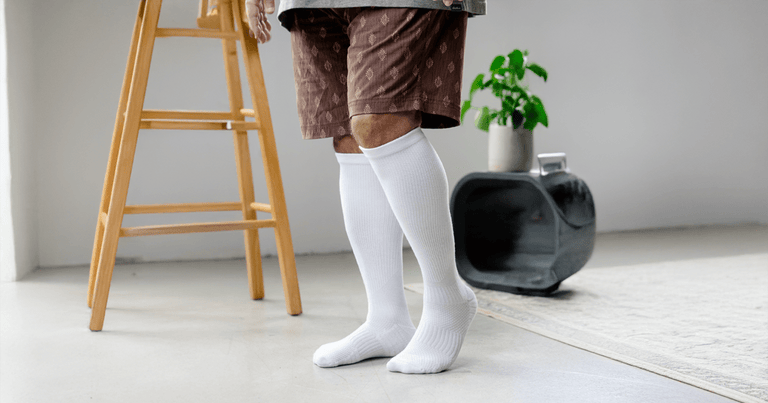Let’s face it—most men are on the move. Whether you’re commuting to work, flying across time zones, chasing after kids, or staying active throughout the day, your feet and legs are doing more than their fair share of the heavy lifting.
Viasox Blogs For People
Compression Socks for Travel Season: Comfort for Planes, Road Trips, and Summer Getaways
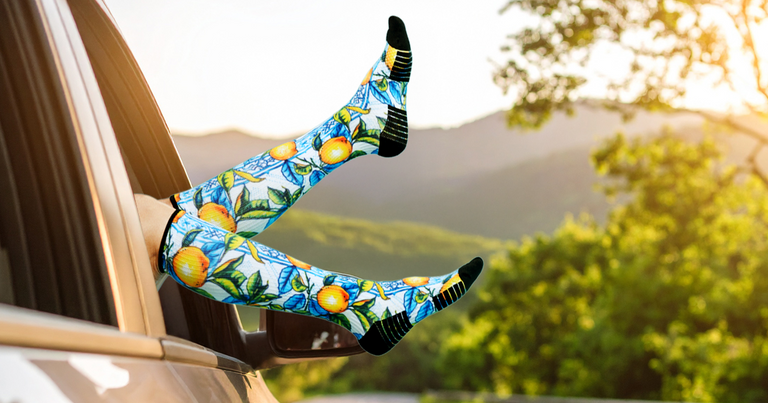
Whether you’re jetting off to a tropical paradise, road-tripping with friends, or hopping between cities, summer travel can take a toll on your legs and feet. Long hours of sitting, walking, or standing in lines can leave you feeling tired, swollen, or just plain uncomfortable. That’s where the right pair of socks can make all the difference.
Style Meets Function: EasyStretch™ Socks for Men Who Want Comfort Without Compromise

When it comes to socks, most guys are used to choosing between two extremes: something that looks good but feels tight, or something that feels great but looks… well, not exactly stylish. At Viasox, we don’t think men should have to compromise. That’s why we created EasyStretch™ Socks—a perfect blend of comfort, stretch, and everyday style that works just as well on the couch as it does on the street.
Summer Adventures Made Easy: How EasyStretch™ Socks Keep You Comfortable on the Go
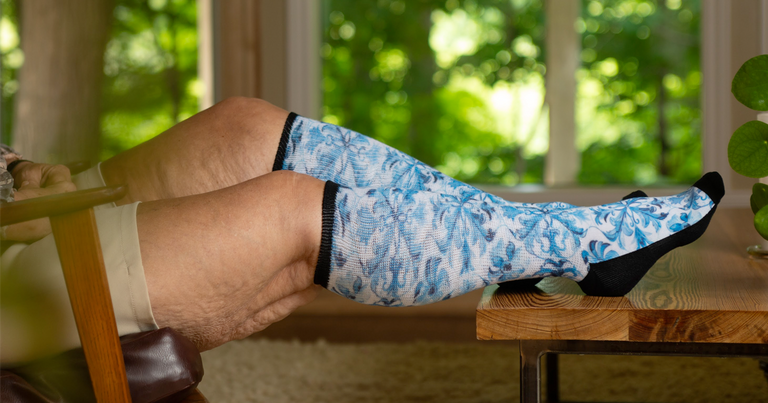
Summer is a season for moving at your own pace—taking scenic walks, discovering hidden beach towns, and wandering through farmers' markets with a fresh lemonade in hand. It’s the time of year when your routine slows down, your to-do list shifts, and comfort becomes the priority.
Ankle Compression, Everyday Comfort: When to Choose Viasox Ankle Socks
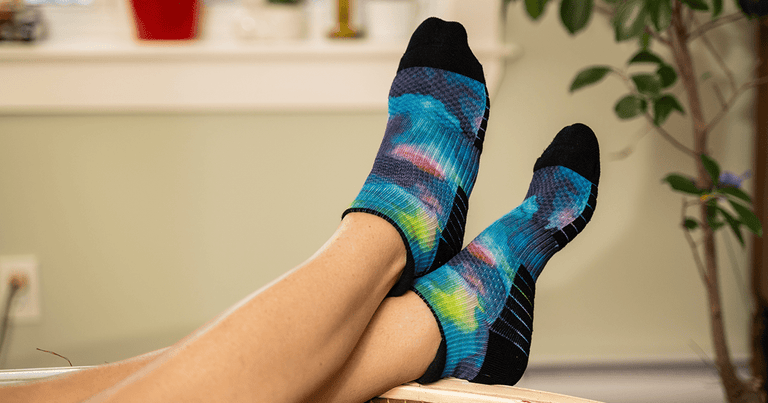
Compression socks are often associated with high-impact activities or long hours on your feet, but not every situation calls for full-length compression. That’s where ankle compression socks come in. Designed to provide targeted support around the feet and ankles without the height of traditional compression socks, Viasox ankle compression socks are a practical and comfortable choice for a wide variety of everyday activities.
Stay Cool, Look Cool: Breathable Sock Options for Summer Days
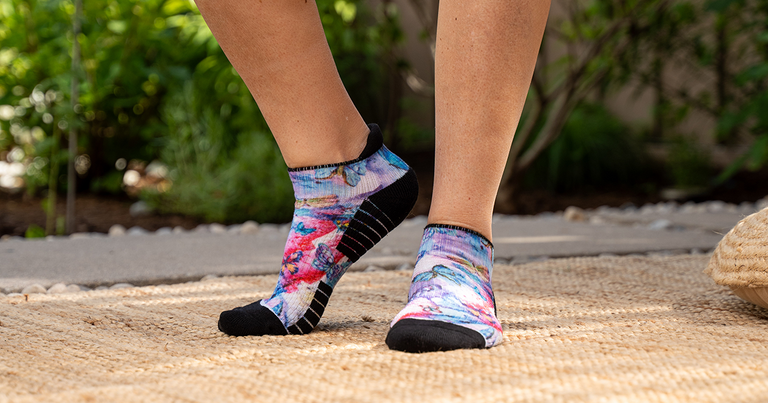
Hot weather calls for breathable fabrics, comfortable fits, and effortless style—right down to your socks. At Viasox, we know that socks aren’t just a cold-weather essential—they’re a year-round staple. And...
Low Profile, High Comfort: Styling Ankle Compression Socks for Casual and Active Days

When it comes to summer comfort, sometimes less really is more—especially when it comes to your socks. That’s where ankle compression socks come in. Offering all the benefits of compression in a sleek, low-cut design, these socks are perfect for staying supported without adding bulk to your outfit.
Step Into Summer: Why Compression Socks Belong in Your Warm-Weather Wardrobe

When you think of summer fashion, compression socks might not be the first item that comes to mind. But believe it or not, they can be a game-changing addition to your warm-weather wardrobe. With lightweight, breathable materials and stylish designs, Viasox compression socks are the perfect companion for everything from long travel days to action-packed sightseeing tours.
Fabric Matters: What Makes Compression Socks and EasyStretch™ Comfortable?

When it comes to socks, comfort isn’t just about the fit—it’s about the fabric. From softness and stretch to breathability and durability, the materials used in your socks play a major role in how they feel throughout the day. At Viasox, we’ve carefully selected high-performance fabrics for our Compression Socks and EasyStretch™ Socks to provide comfort you can count on, morning to night.
Why EasyStretch™ Socks Are Perfect for Unwinding After a Long Day

After a long day of work, errands, or being constantly on your feet, few things feel better than kicking off your shoes and settling into something more comfortable. Whether you're sinking into the couch, cooking dinner, or getting ready for bed, the little comforts matter—including what you wear on your feet.
Workday Comfort: When to Choose Compression Socks vs. EasyStretch™ Socks on the Job

Whether standing for hours, running between meetings, or sitting at a desk all day, your feet and legs take a lot during the workday. Choosing the right pair of socks can make a surprising difference in how energized and comfortable you feel during work and after hours.
How to Care for Compression & EasyStretch™ Socks to Make Them Last Longer

When you find socks you love—especially ones that offer the perfect blend of comfort, support, and style—you want them to last. At Viasox, we design Compression Socks and EasyStretch™ Socks with premium materials to deliver lasting performance. But even the best socks need a little TLC.
Compression Socks for Travel Season: Comfort for Planes, Road Trips, and Summer Getaways

Whether you’re jetting off to a tropical paradise, road-tripping with friends, or hopping between cities, summer travel can take a toll on your legs and feet. Long hours of sitting, walking, or standing in lines can leave you feeling tired, swollen, or just plain uncomfortable. That’s where the right pair of socks can make all the difference.

Whether you’re jetting off to a tropical paradise, road-tripping with friends, or hopping between cities, summer travel can take a toll on your legs and feet. Long hours of sitting, walking, or standing in lines can leave you feeling tired, swollen, or just plain uncomfortable. That’s where the right pair of socks can make all the difference.
Style Meets Function: EasyStretch™ Socks for Men Who Want Comfort Without Compromise

When it comes to socks, most guys are used to choosing between two extremes: something that looks good but feels tight, or something that feels great but looks… well, not exactly stylish. At Viasox, we don’t think men should have to compromise. That’s why we created EasyStretch™ Socks—a perfect blend of comfort, stretch, and everyday style that works just as well on the couch as it does on the street.

When it comes to socks, most guys are used to choosing between two extremes: something that looks good but feels tight, or something that feels great but looks… well, not exactly stylish. At Viasox, we don’t think men should have to compromise. That’s why we created EasyStretch™ Socks—a perfect blend of comfort, stretch, and everyday style that works just as well on the couch as it does on the street.
Summer Adventures Made Easy: How EasyStretch™ Socks Keep You Comfortable on the Go

Summer is a season for moving at your own pace—taking scenic walks, discovering hidden beach towns, and wandering through farmers' markets with a fresh lemonade in hand. It’s the time of year when your routine slows down, your to-do list shifts, and comfort becomes the priority.

Summer is a season for moving at your own pace—taking scenic walks, discovering hidden beach towns, and wandering through farmers' markets with a fresh lemonade in hand. It’s the time of year when your routine slows down, your to-do list shifts, and comfort becomes the priority.
Ankle Compression, Everyday Comfort: When to Choose Viasox Ankle Socks

Compression socks are often associated with high-impact activities or long hours on your feet, but not every situation calls for full-length compression. That’s where ankle compression socks come in. Designed to provide targeted support around the feet and ankles without the height of traditional compression socks, Viasox ankle compression socks are a practical and comfortable choice for a wide variety of everyday activities.

Compression socks are often associated with high-impact activities or long hours on your feet, but not every situation calls for full-length compression. That’s where ankle compression socks come in. Designed to provide targeted support around the feet and ankles without the height of traditional compression socks, Viasox ankle compression socks are a practical and comfortable choice for a wide variety of everyday activities.
Stay Cool, Look Cool: Breathable Sock Options for Summer Days

Hot weather calls for breathable fabrics, comfortable fits, and effortless style—right down to your socks. At Viasox, we know that socks aren’t just a cold-weather essential—they’re a year-round staple. And...

Hot weather calls for breathable fabrics, comfortable fits, and effortless style—right down to your socks. At Viasox, we know that socks aren’t just a cold-weather essential—they’re a year-round staple. And...
Low Profile, High Comfort: Styling Ankle Compression Socks for Casual and Active Days

When it comes to summer comfort, sometimes less really is more—especially when it comes to your socks. That’s where ankle compression socks come in. Offering all the benefits of compression in a sleek, low-cut design, these socks are perfect for staying supported without adding bulk to your outfit.

When it comes to summer comfort, sometimes less really is more—especially when it comes to your socks. That’s where ankle compression socks come in. Offering all the benefits of compression in a sleek, low-cut design, these socks are perfect for staying supported without adding bulk to your outfit.
Step Into Summer: Why Compression Socks Belong in Your Warm-Weather Wardrobe

When you think of summer fashion, compression socks might not be the first item that comes to mind. But believe it or not, they can be a game-changing addition to your warm-weather wardrobe. With lightweight, breathable materials and stylish designs, Viasox compression socks are the perfect companion for everything from long travel days to action-packed sightseeing tours.

When you think of summer fashion, compression socks might not be the first item that comes to mind. But believe it or not, they can be a game-changing addition to your warm-weather wardrobe. With lightweight, breathable materials and stylish designs, Viasox compression socks are the perfect companion for everything from long travel days to action-packed sightseeing tours.
Fabric Matters: What Makes Compression Socks and EasyStretch™ Comfortable?

When it comes to socks, comfort isn’t just about the fit—it’s about the fabric. From softness and stretch to breathability and durability, the materials used in your socks play a major role in how they feel throughout the day. At Viasox, we’ve carefully selected high-performance fabrics for our Compression Socks and EasyStretch™ Socks to provide comfort you can count on, morning to night.

When it comes to socks, comfort isn’t just about the fit—it’s about the fabric. From softness and stretch to breathability and durability, the materials used in your socks play a major role in how they feel throughout the day. At Viasox, we’ve carefully selected high-performance fabrics for our Compression Socks and EasyStretch™ Socks to provide comfort you can count on, morning to night.
Why EasyStretch™ Socks Are Perfect for Unwinding After a Long Day

After a long day of work, errands, or being constantly on your feet, few things feel better than kicking off your shoes and settling into something more comfortable. Whether you're sinking into the couch, cooking dinner, or getting ready for bed, the little comforts matter—including what you wear on your feet.

After a long day of work, errands, or being constantly on your feet, few things feel better than kicking off your shoes and settling into something more comfortable. Whether you're sinking into the couch, cooking dinner, or getting ready for bed, the little comforts matter—including what you wear on your feet.
Workday Comfort: When to Choose Compression Socks vs. EasyStretch™ Socks on the Job

Whether standing for hours, running between meetings, or sitting at a desk all day, your feet and legs take a lot during the workday. Choosing the right pair of socks can make a surprising difference in how energized and comfortable you feel during work and after hours.

Whether standing for hours, running between meetings, or sitting at a desk all day, your feet and legs take a lot during the workday. Choosing the right pair of socks can make a surprising difference in how energized and comfortable you feel during work and after hours.
How to Care for Compression & EasyStretch™ Socks to Make Them Last Longer

When you find socks you love—especially ones that offer the perfect blend of comfort, support, and style—you want them to last. At Viasox, we design Compression Socks and EasyStretch™ Socks with premium materials to deliver lasting performance. But even the best socks need a little TLC.

When you find socks you love—especially ones that offer the perfect blend of comfort, support, and style—you want them to last. At Viasox, we design Compression Socks and EasyStretch™ Socks with premium materials to deliver lasting performance. But even the best socks need a little TLC.
